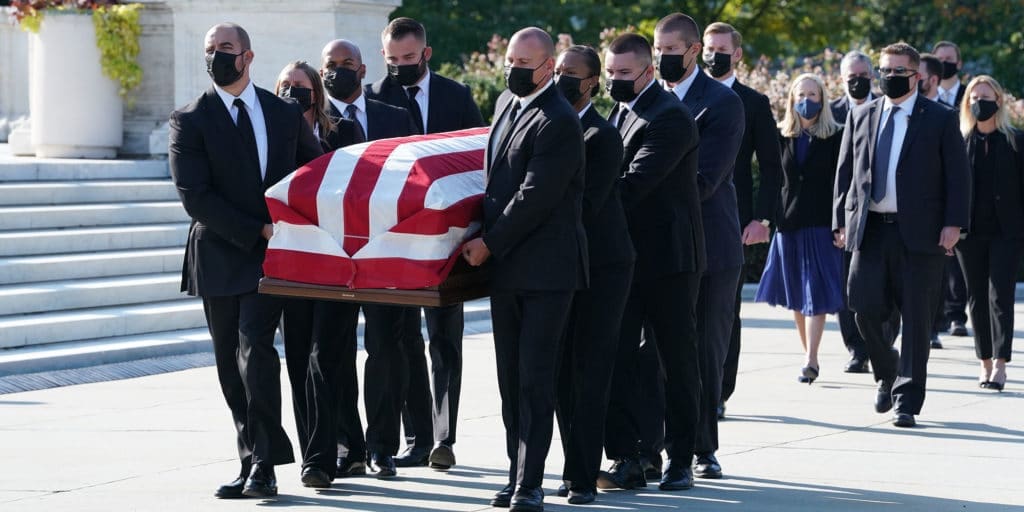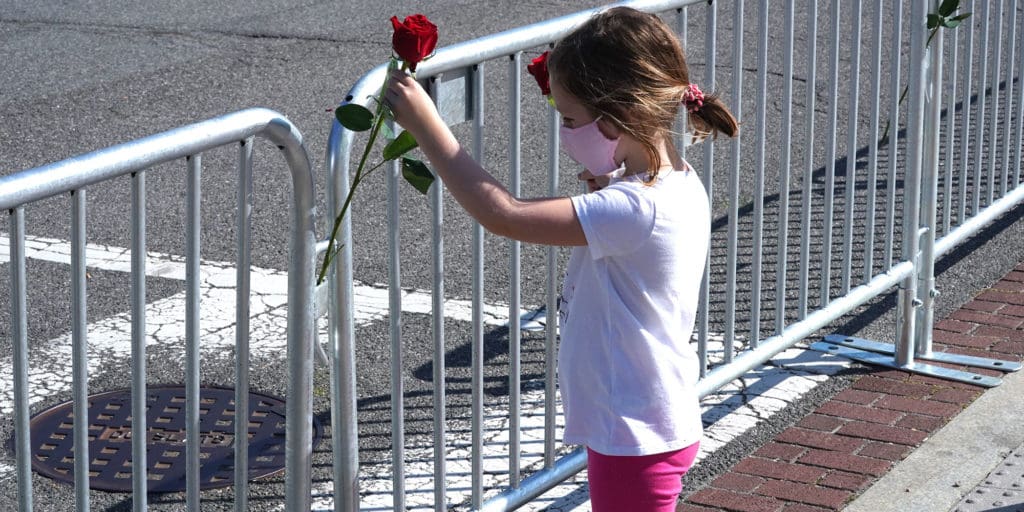At the age of 87, Ruth Bader Ginsburg passed away due to complications from pancreatic cancer on September 18, 2020. For those of us left behind, we find ourselves reflecting on the legacy of a woman who championed civil rights for many marginalized groups, notably and especially individuals with disabilities.
 But what impact was left by this attorney turned Supreme Court justice? And how can we feel the effects of the legal precedents that Ginsburg helped establish? To better understand the lasting effects of Ginsburg’s actions, we need look no further than the landmark case of Olmstead v. L.C.
But what impact was left by this attorney turned Supreme Court justice? And how can we feel the effects of the legal precedents that Ginsburg helped establish? To better understand the lasting effects of Ginsburg’s actions, we need look no further than the landmark case of Olmstead v. L.C.
Olmstead v. L.C.
In 1995, Lois Curtis and Elaine Wilson, two women from Georgia with mental health and developmental disabilities, filed a lawsuit by claiming discrimination under the Americans with Disabilities Act (ADA). Both women had been living at a mental health treatment center for years, but they had been cleared to leave and receive treatment in their community by their doctors, and they both wanted to pursue this option. However, the facility’s administration refused to approve their release for years.
In the case, the state of Georgia asserted that providing Curtis and Wilson with Medicaid-funded treatment was not financially sound. Moreover, they argued that allowing the women to receive community-based treatment would be a “fundamental alteration” to the state’s current disability programs under the ADA.
To support their argument, Georgia suggested that a Medicaid statute which required funding for facility-based treatment (but not in-home treatment) showed a governmental preference for treatment at accredited institutions instead of in communities. If this argument had been upheld, it would have been markedly more difficult for individuals with mental disabilities to ever transition from a treatment facility back to the community.
Thankfully, the court didn’t see it that way.
In 1999, after the case had gone through the lower courts, the Supreme Court agreed to take on the case. In the Court’s estimation, the “unjustified isolation” of people with disabilities in treatment facilities was a clear violation of Title II in the ADA. Rather, according to the Supreme Court, the ADA requires facilities to transition individuals to community treatment if their care providers find that the placement is safe and right for the individual, if the individual wishes to go, and if their placement in the community can be “reasonably accommodated.”
Justice Ginsburg wrote the majority opinion for this ruling, and noted that it “reflects two evident judgements.”
First, she wrote that “institutional placement of persons who can handle and benefit from community settings perpetuates unwarranted assumptions that persons so isolated are incapable or unworthy of participating in community life.”
“Second, confinement in an institution severely diminishes the everyday life activities of individuals, including family relations, social contacts, work options, economic independence, educational advancement and cultural enrichment.”
Also in the opinion, Ginsburg drew a clear connection between discrimination based on disability and discrimination based on gender or race. In the same way that anti-discrimination laws have been interpreted to address prejudice, even when that was not the express intent of the law, Ginsburg argued that this was a similar scenario, where existing laws may not have specifically intended to prevent this type of discrimination, but they did set a precedent that this discrimination was unlawful.
Notably, the Supreme Court rejected the notion that transitioning individuals with disabilities into the community was too expensive. In fact, they found that providing treatment in the community is less expensive, and they noted that Medicaid offers waivers to pay for at-home treatments.
Thanks to the work of Ginsburg and her fellow Justices, it became easier for people with mental disabilities to receive treatment outside of treatment facilities. However, the impacts of this ruling did not stop there.
“We should not be held back from pursuing our full talents, from contributing what we could contribute to the society, because we fit into a certain mold, because we belong to a group that historically has been the object of discrimination.” – RBG
Ginsburg’s Reaching Impact
Since the case of Olmstead v. L.C., lower courts have further clarified which rights are protected by this ruling, and have successfully ensured these same protections for people with physical disabilities who require help with personal care.
This ruling also had a significant impact on other cases years later. In 2003, the 10th Circuit Court of Appeals ruled that individuals with disabilities do not have to already be in a treatment facility to receive these protections.
In the court’s ruling, they noted that, “these protections would be meaningless if plaintiffs were required to segregate themselves by entering an institution before they could challenge an allegedly discriminatory law or policy that threatens to force them into segregated isolation.”
In this way, the original Supreme Court ruling was expanded through law to encompass more people with disabilities and to offer them better, more thorough protections. But the impacts of Ginsburg’s work did not stop with legal precedent.
Since the famous Olmstead v. L.C. case, Medicaid vouchers for in-community treatment have been greatly expanded. The majority of states now allow at least a portion of those with disabilities to choose and manage who helps them at home, thus providing more autonomy. For example, most states now allow family members to receive government pay for working as a caregiver for a person with a physical or mental disability.
Ginsburg’s work for people with disabilities has had a far-reaching impact on millions of lives. But that doesn’t mean the work is over.
Continuing Ginsburg’s Legacy


Notably, Ginsburg wrote that a reasonable waiting list to receive disability services would not constitute discrimination. As you might imagine, “reasonable” is a vague term, particularly when it comes to ensuring access to vital care. In 2018, more than 820,000 individuals with disabilities were on waiting lists to receive funding for home and community-based services.
Of these individuals, 70% have developmental disabilities, making them the exact demographic that ought to be protected by the Olmstead verdict. Yet, their average wait time on these waiting lists is five and a half years; that’s five and a half years with minimal access to necessary services and care.
Clearly, there is work to do. Ginsburg dedicated her life to defending the rights of marginalized individuals, and now that responsibility falls on those of us who remain. Each of us, in whatever ways are available to us, must advocate for change that better protects the fundamental rights of those with disabilities. That is how we can make real, tangible differences for the living, while remembering and honoring the actions of those who came before us and paved the way.
What are you doing to advocate for individuals with disabilities?
Tell us about your experience in the comments below.
What questions do you have about the state of disability rights?
Email us at info@painresource.com with your ideas!
Are you on Facebook?
Join our online community by clicking here.




